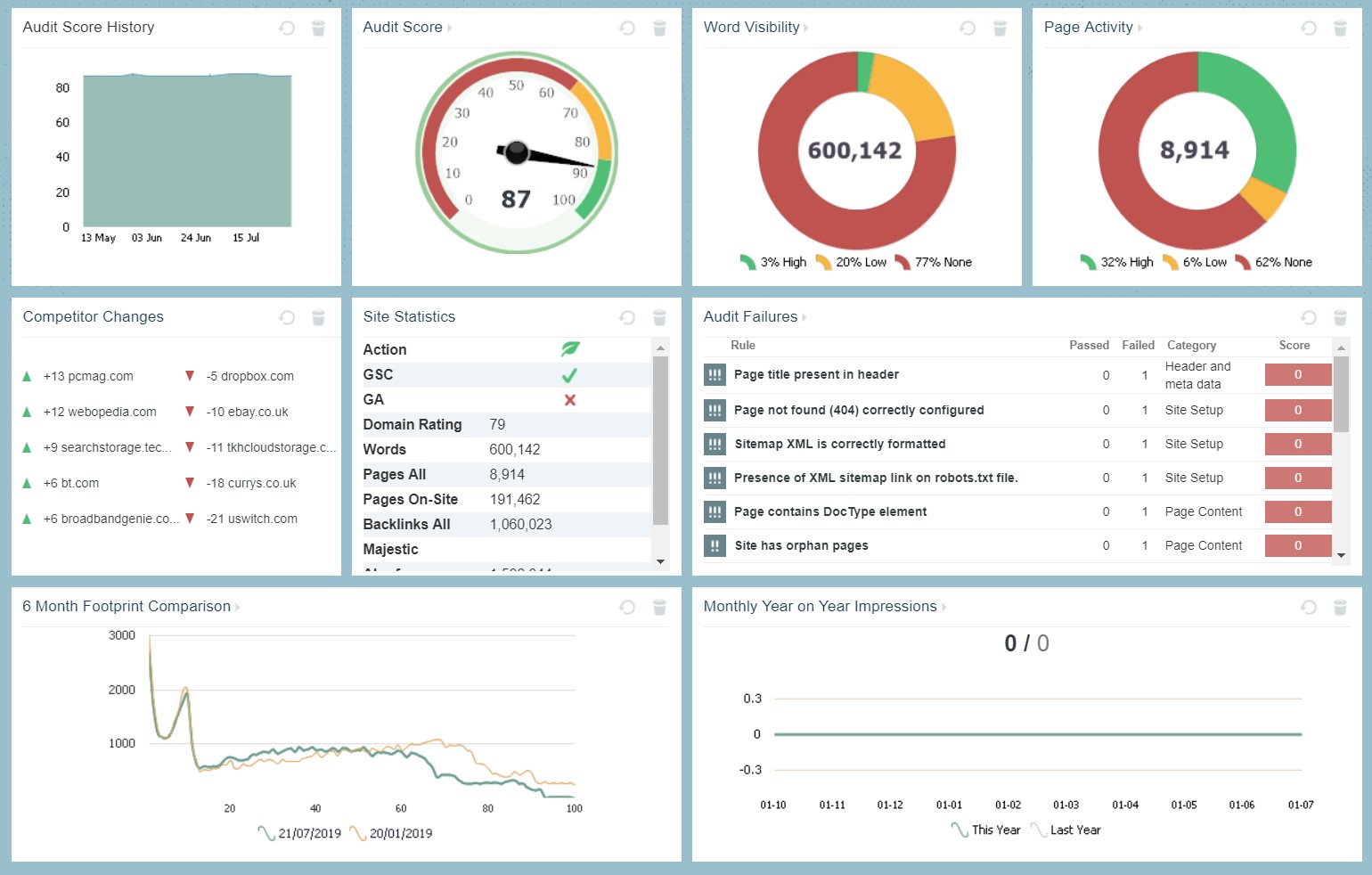If you have worked in digital marketing for a few years, you will have experienced terrible websites.
It’s that moment when you begin work on a new project and the reality of a website’s current ability to perform hits you, and it hits you hard.
It may be a hand-coded underloved site which has no clear purpose for being.
It could be a vast online entity which has had content bolted onto it systematically over many years without any thought, care, or attention paid.
Websites are not inherently terrible, and every website can be saved (although sometimes it can be a better strategic choice to start again).
Here are four tips you can use to help bring websites back to life.
1. Take a Step Back & Breathe
When you start working on a website that has major SEO problems and performance issues, you may be tempted to jump in and fix as much as you can as fast as possible.
However, you must tune out all the noise and make sure you complete all optimization fundamentals.
The first stage in any new website optimization campaign need to be focusing on the customer and helping them achieve their objectives and accomplish tasks.
On top of this, you need to complete situational analysis. This includes effective data gathering. Doing this will help you assess the overall situation and plan ahead.
Speaking with the customer will enable you to understand their pain points with the website.
You can also discover any actions taken that overperformed in the past, too. This assists in removing performance barriers early on, and for prioritizing tactics that have worked in the past.
You can implement simple fixes discovered, such as broken content, technical updates, and missing metadata. The pertinent point is that these fixes don’t distract you from the planned high impact activity.
If you are technical by nature, you will likely stray towards your happy place (technical SEO). Frequently, this is at the expense of other higher impact actions.
This is more prolific when projects feel unwieldy from the outset and the site in question cannot perform in its current state.
It is important at this initial phase of expected work to take a step back and consider the bigger picture. You need to put together a meaningful project roadmap that will keep the project on course and maintain a level of progress.
An effective project plan fuels project momentum and positively impacts staff sentiment regardless of how terrible the current website is perceived.
Completing this body of analysis ensures that nothing important is overlooked.
Examples of this include:
- Blocked content.
- Site crawling.
- Indexation.
- Penalty and algorithms.
Here’s a useful guide on things to consider before making website changes.
2. Stay on Target
Set realistic goals and relevant KPIs from the outset.
From this, you can report progression as frequently as useful – at project start, this may be weekly.
Progress can be small wins such as increased click-through rates (CTRs), through to more substantial ranking, traffic, or conversion rate optimization (CRO) gains.
Include a mix of leading indicators (for example, impressions), plus higher business impact measurements.
Impressions are frequently your first chance to show impact from actions. Your next phase moves onto wider business and commercial value.
Keep the focus on agreed objectives, goals, and KPIs. This helps:
- Retain control over would-be-messy optimization projects.
- Enables greater focus on the actions making the most positive contribution to customer objectives.
Supplemental gains include avoiding being pulled away from priority action-taking. Often this is due to excessive justification and competing demands for expertise focus on too many varied activities.
Provide interactive dashboards and data visualization. This needs to be ever-accessible to customers and relieves extra workload tied to showing early progress indicators.
Here’s an example of this in action from my company’s marketing insights platform:

3. Take the Lead
When customers come to you for website optimization they are asking for help. They expect to have a preconceived hypothesis challenged (or verified).
They want to be led by experts who can empower them to grow, improve, and refine.
When faced with complex and higher fail-potential optimization projects, the need for a lead role increases in importance.
The lead role can be the SEO specialist, account manager, or similar informed person.
Project management becomes harder when websites are messy.
Terrible websites are a reflection on the broader business approach, mindset, and historical processes.
All of this can change with the right lead role.
The leader for website optimization projects:
- Puts in place project plans and sets agreed roles, responsibilities, actions, and measures.
- Gathers data and information from key staff and ensures reporting is effective and timely.
- Sanity checks the approach, enables agility within planned roadmaps, and drives change when required.
- Distills customer/business goals into optimization project plans and approaches that work.
- Prioritizes actions, reviews impact, and empowers people to focus on the actions they are most suited for.
- Pulls everything together and maintains clarity, purpose, and projected performance against objectives.
4. Prioritize Everything
A poor website can become a black hole of time, resource, budget, and motivation. Sucking into it everything you are able to throw at it, plus so much more.
As a digital marketing specialist, this is where good old fashioned backlogs and simple action priority lists come into play.
Google Docs is a fantastic way to enable disperse teams to access the same information. This enables everyone to see and set priorities (controlled by a single person/the lead), and actively take action – sooner.
It also overcomes the communication barriers and red tape that will slow projects down to a halt.
There are many free tools (such as ToodleDo and Trello) that make it easy to manage website optimization projects.
Once you have a system in place for better project management, the only real challenge comes down to effectively managing action completion.
Added to this need is setting accurate expected time to completion against tasks.
Summary
Not all websites are equal. Over time you will be faced with website optimization projects that appear doomed to failure from the outset.
There is a risk with certain projects that you may fall into the performance abyss. But his doesn’t have to be the case!
Key steps to working with bad websites include:
- Increased thinking, planning, and time management.
- Better ways to manage teams and align focus towards the end goals.
- Better lead roles.
- Use backlogs and traditional project management approaches that work.
More Resources:
- 5 Bad SEO Content Tactics You Should Have Abandoned Already
- 5 Examples of Terrible Content That Ranks Remarkably Well
- 7 Terrible, No-Good SEO Tactics to Abandon Forever
Image Credits
Screenshot taken by author, August 2019




